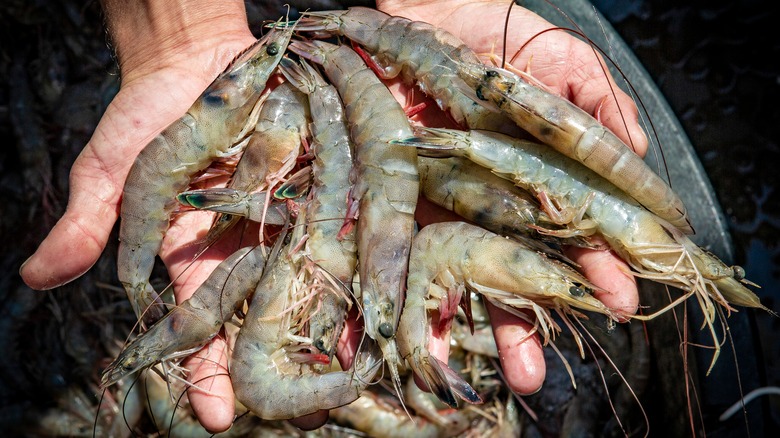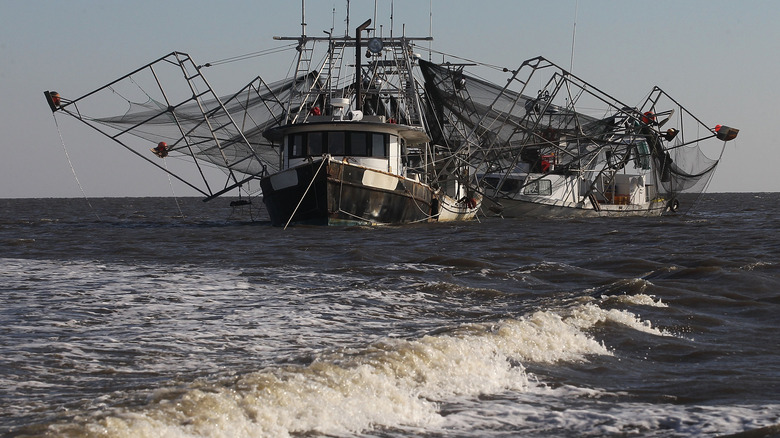How The USDA Is Helping Louisiana's Struggling Shrimp Industry
Shrimp is inextricably linked to Louisiana. Sure, the diminutive crustaceans can be pulled out of many waters around the world, but the Gulf State has a shrimping history that likely dates back to the original Native American inhabitants of the lower Mississippi region, states a 1961 Louisiana State University research paper. The French and other migrants continued the practice, but as an industry, shrimping coalesced around Barataria Bay in 1867 where then-modern canning and drying operations were put in place.
By the mid-twentieth century, it was one of the largest fisheries in the U.S. But since then, shrimp boat captains and other industry operators have faced myriad problems that some see as dire. As WDSU reported, the price per pound for shrimp sunk from four dollars in May to one dollar and fifty cents in August. In the face of rising fuel costs, that drop is making it hard to even take boats out on the water. Further compounding problems is the glut of imported shrimp from overseas that undercuts Louisiana shrimp on price and the lingering effects of Hurricane Ida in 2021, which brought 150-mph winds that destroyed many boats, said the AP.
With the overall seafood industry in the state employing roughly 23,000 people and generating $2.4 billion a year, per AP, many are asking what can be done to make sure that jobs and income are safeguarded against threats.
Helping an industry and fighting hunger
Recently, the USDA announced a plan to purchase $25 million worth of Louisiana gulf shrimp in an effort to stanch losses and inject much-needed capital into the industry. The effort is the work of Louisiana Congressman Garret Graves and was announced on his website. Aiding him was Representative Jerry Carl of Alabama.
"We are not giving up on Louisiana's seafood industry — the largest supplier in the country and the economic engine of many areas along our coast," Graves said in his press release.
Not only does the plan put money directly into the pockets of those who need it most, but it gives the USDA food that it can then distribute to those suffering from hunger. Schools, food banks, and disaster-stricken areas will be among the recipients of much of the purchased shrimp.
This is welcome news as it comes on the heels of a recent announcement from the USDA that some 13.5 million households in the nation deal with some form of food insecurity. Though numbers have been on a downward trend since 2011, there is still much room for improvement. Having the ability to support an industry while also providing nutrition is, on-balance, a win for all.

